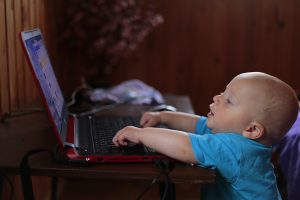Creating inclusive recreational and leisure activities for children with disabilities is crucial for ensuring that all kids have the opportunity to enjoy fun, relaxation, and social interaction. By utilizing innovative and creative approaches, it is possible to adapt various activities to make them accessible and enjoyable for children with diverse needs. Let’s dive deeper into some strategies and expand on how we can make these activities more accessible. Adapting Physical Activities One innovative way to adapt physical activities for children with disabilities is by using adaptive equipment such as modified sports gear or assistive devices. These adaptations can help children with physical impairments participate in activities like swimming, biking, or playing ball games. For example, adaptive swimming programs often use flotation devices that provide additional support, ensuring that children can safely enjoy the water. Similarly, adaptive bikes with extra stability features allow children with balance issues to experience the joy of cycling.
Customizing Traditional Sports
Creating modified versions of traditional sports can also make them more inclusive and enjoyable for children with disabilities. Take baseball, for instance—using beep baseballs that make sound can help visually impaired children track the ball. Moreover, having an inclusive game format where the rules are adjusted, such as allowing more time for certain actions or reducing the playing field size, can make a big difference.
Organizing Inclusive Sports Days
Inclusive sports days can be organized where activities are designed to cater to all abilities. Hosting events with a blend of adaptive and traditional sports ensures that every child has something to look forward to. Encourage participation by having family members or volunteers assist the children, fostering a supportive community spirit.
Utilizing Technology Technology can play a significant role in making recreational activities more accessible for children with disabilities. Virtual reality simulations, interactive games, and adaptive apps can provide sensory stimulation, cognitive challenges, and social interaction opportunities for kids with diverse needs.
Virtual Reality and Augmented Reality
By leveraging technology, children with disabilities can engage in recreational activities in a virtual or augmented reality setting that caters to their specific abilities. Virtual reality can simulate environments that might be otherwise inaccessible, allowing children to explore and interact in a safe, controlled setting. For instance, virtual field trips can take children to places like the zoo or a national park without leaving their home.
Remote Participation and Online Communities
Additionally, technology can facilitate remote participation in activities, allowing children who may have mobility constraints to join in virtually. Online platforms and communities can be established where children participate in group activities, such as virtual dance classes or art sessions, fostering interaction and engagement from the comfort of their homes.
Creating Sensory-Friendly Environments For children with sensory processing disorders or autism, creating sensory-friendly environments is essential for ensuring their comfort and enjoyment during recreational activities. Designing spaces with soft lighting, noise-canceling headphones, textured surfaces, and calming colors can help reduce sensory overload and create a more inclusive atmosphere for all children to participate in leisure activities.
Designing Multi-Sensory Rooms
Multi-sensory rooms can be set up in community centers or schools, offering a variety of sensory experiences tailored to individual needs. These rooms might include tactile panels, bubble tubes, and soft play areas, providing a safe space where children can explore and relax.
Outdoor Sensory Playgrounds
Outdoor sensory playgrounds are another excellent addition, incorporating elements like water features, musical instruments, and tactile paths. These outdoor environments offer children the opportunity to engage with nature while enjoying a sensory-rich experience.
Implementing Peer Support Programs Peer support programs can be a valuable resource for children with disabilities to experience social interaction and build friendships while engaging in recreational activities. By pairing children with disabilities with peer mentors or buddies who understand their unique needs, kids can feel supported and included in various leisure activities, fostering a sense of belonging and camaraderie.
Training Peer Mentors
It’s important to train peer mentors to understand the needs and preferences of their buddies. Training sessions can include learning about various disabilities, communication strategies, and empathy exercises. This preparation helps ensure that peer mentors can provide meaningful support and companionship.
Organizing Social Events
Organizing inclusive social events, such as themed parties or group outings, can encourage interaction and help children build lasting friendships. Activities should be designed to include everyone, with options for different levels of participation based on each child’s comfort and ability.
Collaborating with Specialized Professionals Collaborating with specialized professionals such as occupational therapists, physical therapists, or recreational therapists can provide valuable insights and expertise in adapting recreational activities for children with disabilities. These professionals can offer guidance on modifying activities, creating inclusive environments, and implementing strategies to support children with diverse needs in participating in leisure activities successfully.
Tailoring Activities to Individual Needs
Specialized professionals can tailor activities to cater to individual needs, ensuring that each child is fully supported and included in recreational experiences. For example, an occupational therapist might suggest specific exercises to improve fine motor skills in a crafting session, while a physical therapist could recommend adaptive sports techniques for a child with mobility challenges.
Continuous Evaluation and Feedback
Regular evaluation and feedback from these professionals can help refine and improve the inclusivity of activities over time. By continuously assessing the effectiveness of adaptations and making necessary adjustments, recreational programs can evolve to better serve the needs of all participants.
Enhancing Accessibility and Inclusion Accessibility goes beyond physical adaptations and involves creating an environment where all children feel welcome and valued. This can include training staff and volunteers on inclusive practices, developing clear communication strategies, and involving families in the planning process.
Training Staff and Volunteers
Staff and volunteers should be trained in disability awareness and inclusive practices to ensure they can effectively support all participants. Workshops and training sessions can cover topics such as communication techniques, understanding different disabilities, and promoting inclusive interaction.
Communication Strategies
Developing clear communication strategies is crucial for ensuring that all children can understand and participate in activities. This might involve using visual aids, sign language, or simplified instructions to accommodate different communication needs.
Family Involvement
Involving families in the planning process can provide valuable insights into the specific needs and preferences of the children. Family members can offer feedback on what works well and suggest improvements, helping to create personalized and meaningful recreational experiences.
Exploring Diverse Recreational Options There are countless recreational activities that can be adapted to be more inclusive, from arts and crafts to music and drama. By exploring a variety of options, children can discover new interests and talents while enjoying recreational time.
Adaptive Arts and Crafts
Arts and crafts can be adapted with tools and materials that cater to different abilities. For instance, oversized brushes and textured materials can assist children with fine motor skill challenges. Providing a range of sensory materials, such as clay and fabric, can also enhance the creative experience for children with sensory preferences.
Inclusive Music and Drama Programs
Music and drama programs can be particularly enriching, offering opportunities for self-expression and creativity. Adaptive musical instruments, such as percussion instruments with different grip options, can make music accessible to all. Drama programs can be designed to include role-playing and storytelling, allowing children to engage in the performing arts in ways that suit their abilities.
Advocating for Policy and Community Support Achieving true inclusivity requires advocacy and support at the policy and community level. By working together, communities can create a more inclusive environment for children with disabilities.
Lobbying for Inclusive Policies
Advocating for policies that promote inclusion in recreational settings can lead to broader systemic changes. This might involve lobbying for funding for adaptive equipment, accessible facilities, and training programs for staff and volunteers.
Building Community Partnerships
Building partnerships with local organizations, businesses, and schools can help create a network of support for inclusive recreational activities. These partnerships can provide resources, expertise, and opportunities for collaboration, enhancing the quality and reach of programs.
Raising Awareness and Promoting Acceptance
Raising awareness about the importance of inclusion and promoting acceptance within the community is essential for creating a supportive environment. Community events, awareness campaigns, and educational programs can help foster understanding and acceptance, paving the way for a more inclusive society.
By taking these steps and embracing a comprehensive approach to inclusivity, we can ensure that recreational and leisure activities are accessible to all children, allowing them to enjoy the benefits of play, creativity, and friendship.



